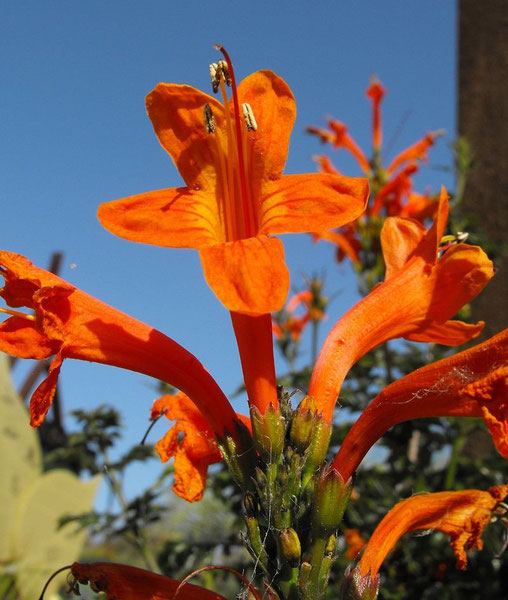Tecoma capensis
 Image: Stickpen
Image: Stickpen
Description
Tecoma capensis is a species of flowering plant in the family Bignoniaceae, native to southern Africa. Despite its common name, it is not closely related to the true honeysuckle.Tecoma capensis has been in cultivation for many years and is often used for hedging, as it is a scrambling shrub. It can be propagated from cuttings or by removing rooted suckers during the active growth phase.
It can be planted in semi-shade to full sun. In cold areas young plants should be protected from frost. To keep this shrub clean and tidy, it must be pruned back in late winter to promote new growth and flowers. The application of a balanced fertilizer after pruning will enhance the growth and flowering.
Propagation instructions - cuttings
Cape honeysuckle can be planted in semi-shade to full sun. It withstands clipping and can be trained into a neat hedge, or allowed to bush out into a more informal hedge. To keep this shrub clean and tidy, it must be pruned back in late winter to promote new growth and flowers. Plants can be pruned back heavily if required, and will resprout. The application of a balanced fertilizer after pruning will enhance the growth and flowering.
Propagation instructions - seeds
Tecomaria capensis is widely cultivated and very easy to propagate from cuttings or by removing rooted suckers or runners during the active growth phase. In areas prone to frost young plants should be protected. It is remarkably tolerant of periods of drought, and is well suited to water-wise gardens.
Sources and references
Scientific name
Tecoma capensis
Common name(s)
Cape honeysuckle
Features
- Drought-resistant
- Easy to grow
- It provides medicinal value
- This is a bird-friendly species
- This will attract honey bees
- Will attract sunbirds
